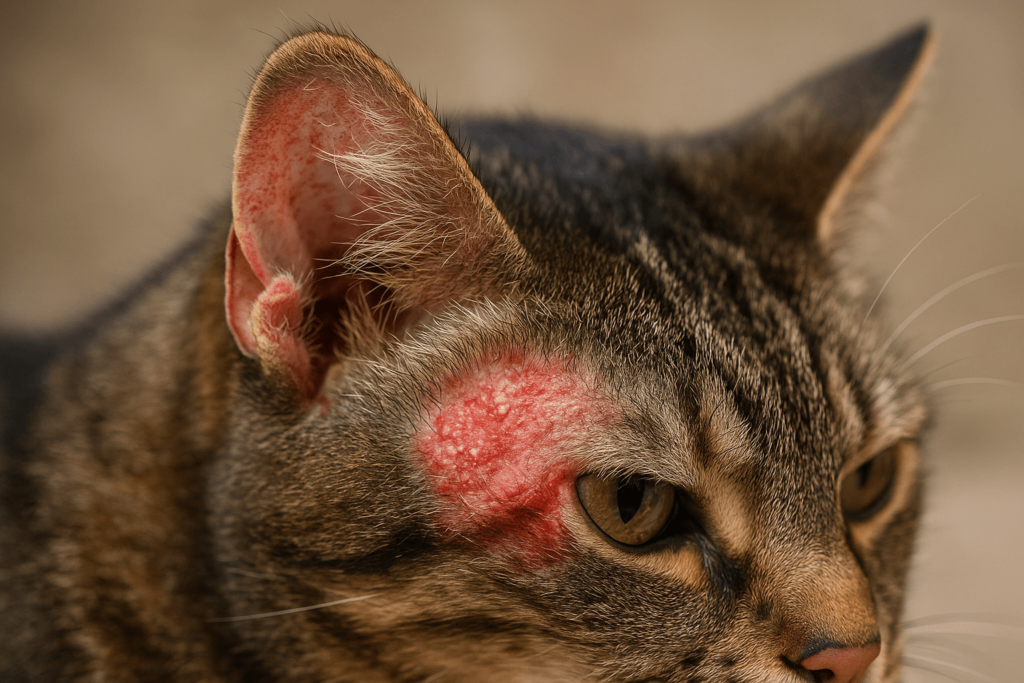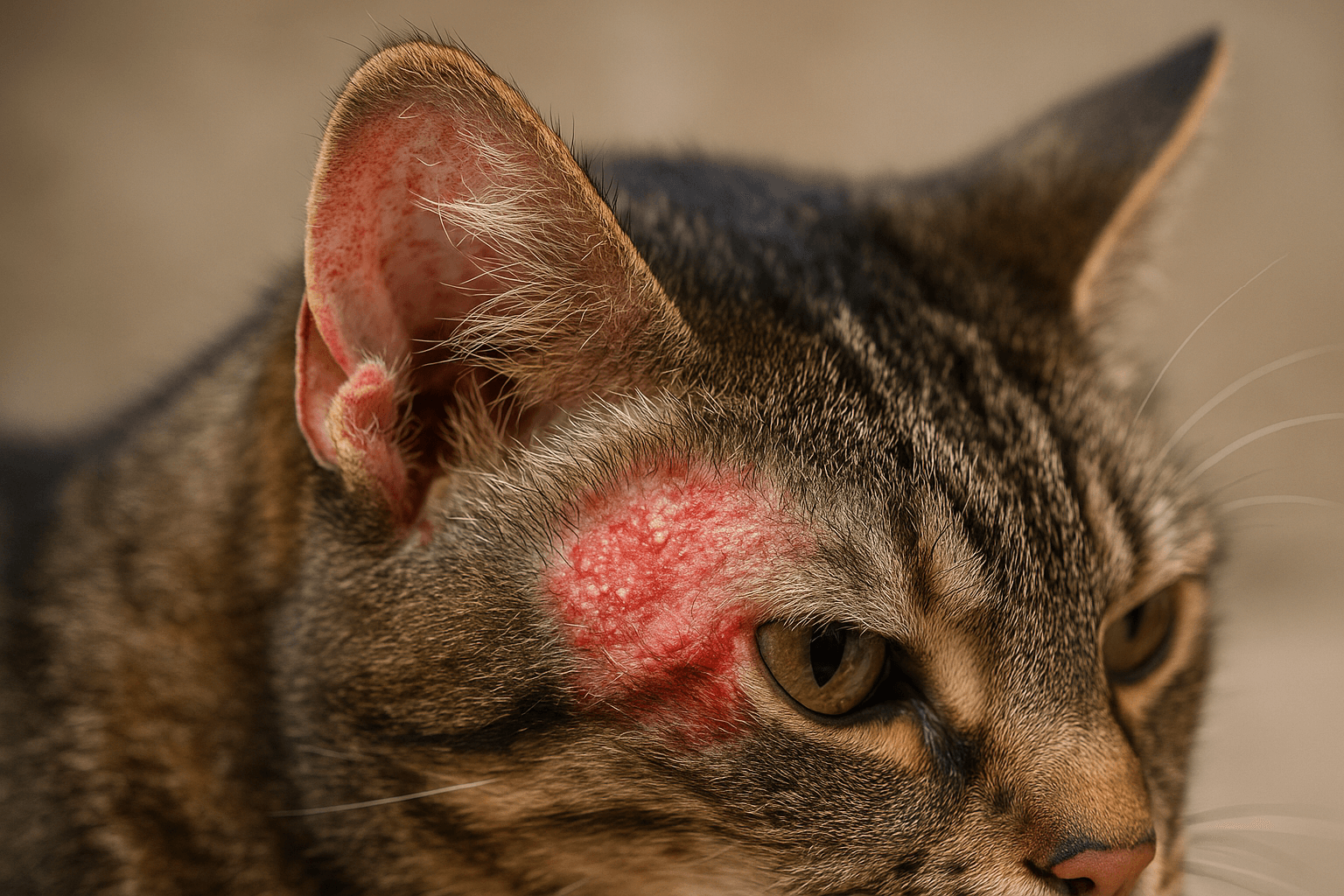Mange on Cat Ears: What You Need to Know
If you’ve noticed your cat scratching their ears excessively or observed red, scaly patches around their ear area, they might be suffering from mange. Mange is a skin condition caused by mites that burrow into the skin, leading to irritation, hair loss, and discomfort for your feline friend. While mange is relatively uncommon in cats compared to dogs, it’s essential to recognize the signs early and seek appropriate treatment. In this blog post, we’ll explore everything you need to know about mange on cat ears, including its causes, symptoms, prevention, and treatment options. With timely intervention and proper care, you can help your cat recover quickly and comfortably.
Common Types of Mange That Affect Cat Ears
Mange comes in various forms, each caused by different types of mites. Understanding the specific type of mange affecting your cat’s ears is crucial for effective treatment. Here are the most common types of mange seen in cats:
Notedric Mange (Feline Scabies):
Caused by Notoedres cati, this highly contagious form of mange leads to intense itching and crusting around the ears, face, and neck.Demodectic Mange:
Triggered by Demodex mites, this type is less common in cats but can cause localized hair loss and mild irritation, often due to an underlying health issue.Otodectic Mange (Ear Mites):
Ear mites (Otodectes cynotis) are tiny parasites that infest the ear canal, causing excessive scratching, head shaking, and dark, waxy discharge.Sarcoptic Mange:
Though rare in cats, sarcoptic mange can occur when cats come into contact with infected animals, leading to severe itching and skin lesions.Cheyletiellosis (Walking Dandruff):
This condition, caused by Cheyletiella mites, results in flaky skin that resembles dandruff, often affecting the head and ears.
Identifying the type of mange is the first step toward providing targeted care and relieving your cat’s discomfort.

Signs Your Cat May Have Mange on Their Ears
Detecting mange early can prevent further complications and ensure your cat receives prompt treatment. Keep an eye out for these telltale signs that may indicate a problem with your cat’s ears.
Excessive Scratching or Head Shaking:
Persistent scratching or vigorous head shaking is often the first sign of irritation caused by mites.Hair Loss Around the Ears:
Patchy or thinning fur near the ears can signal mange, especially if accompanied by redness or inflammation.Crusty or Scaly Skin:
Mange often causes dry, flaky, or crusty skin that may appear on or around the ears.Dark, Waxy Ear Discharge:
A buildup of dark, coffee-ground-like debris in the ear canal is a hallmark symptom of ear mites.Irritated or Swollen Ear Flaps:
Redness, swelling, or thickening of the ear flaps may indicate a severe infestation requiring immediate attention.
Recognizing these symptoms allows you to act quickly and minimize your cat’s discomfort while preventing the spread of mites to other pets.
Check this guide 👉Understanding Cat Ear Body Language: Best 7 Expert Tips!
Check this guide 👉Cat Ear Infection Treatment: Best 7 Expert Tips!
Check this guide 👉Cat Ear Mites Treatment: Best 7 Expert Tips!
Symptoms of Mange on Cat Ears | Treatment Options for Mange |
|---|---|
Excessive scratching or head shaking | Medicated ear drops for ear mites |
Hair loss around the ears | Topical ointments for skin irritation |
Crusty or scaly skin | Oral medications to kill mites |
Dark, waxy ear discharge | Flea and tick preventatives |
Red, swollen ear flaps | Regular cleaning of affected areas |
How to Prevent Mange on Cat Ears
Prevention is always better than cure when it comes to mange. Taking proactive steps can reduce the risk of your cat developing this uncomfortable condition.
Regular Grooming:
Brushing your cat regularly helps remove loose fur and debris, reducing the chances of mites taking hold.Keep Their Environment Clean:
Wash bedding, toys, and litter boxes frequently to eliminate potential mite habitats.Use Flea and Tick Preventatives:
Many flea and tick treatments also protect against mites, making them a valuable addition to your cat’s routine.Limit Contact with Infected Animals:
Avoid letting your cat interact with stray or infected animals that may carry mites.Schedule Routine Vet Check-Ups:
Regular veterinary visits can help catch early signs of mange or other health issues before they worsen.
By incorporating these preventive measures, you can safeguard your cat’s ears and overall well-being.
Treatment Options for Mange on Cat Ears
Once diagnosed, treating mange promptly is essential to alleviate your cat’s discomfort and prevent secondary infections. Here are some common treatment methods recommended by veterinarians.
Medicated Ear Drops:
For ear mites, medicated drops are applied directly into the ear canal to kill mites and soothe irritation.Topical Treatments:
Ointments or creams containing antiparasitic ingredients can be applied to affected areas to target mites and reduce inflammation.Oral Medications:
In severe cases, oral medications like ivermectin may be prescribed to eliminate mites systemically.Antibiotics or Antifungals:
If a secondary infection develops, antibiotics or antifungal medications may be necessary to clear it up.Environmental Cleaning:
Treating your home environment—including washing fabrics and vacuuming—is crucial to prevent reinfestation.
With consistent treatment and follow-up care, most cats recover fully from mange without long-term effects.
Common Misconceptions About Mange
Misunderstandings about mange can lead to ineffective treatments or unnecessary worry. Clearing up these misconceptions helps cat owners make informed decisions.
Mange Only Affects Dirty Cats:
Mange can affect any cat, regardless of cleanliness, as it’s caused by mites that thrive in warm, protected environments.All Mange Is Contagious:
While some types of mange are highly contagious, others, like demodectic mange, are not easily spread between animals.Mange Always Causes Severe Symptoms:
Mild cases of mange may go unnoticed until they worsen, so regular check-ups are vital.Over-the-Counter Products Cure All Types of Mange:
Some mange types require prescription medications, so professional advice is essential.Mange Is Untreatable:
With proper veterinary care, mange is treatable, and most cats recover completely.
Understanding the truth behind these myths empowers you to handle mange effectively.
Natural Remedies for Mild Mange Cases
For mild cases of mange, natural remedies can complement veterinary treatments and promote healing. Always consult your vet before trying these options.
Apple Cider Vinegar Rinse:
Diluted apple cider vinegar can help clean affected areas and deter mites naturally.Coconut Oil Application:
Coconut oil has moisturizing and antiparasitic properties that soothe irritated skin and combat mites.Aloe Vera Gel:
Pure aloe vera gel reduces inflammation and promotes skin healing in mange-affected areas.Lavender Essential Oil (Diluted):
Lavender oil’s calming scent and antimicrobial properties can aid in soothing irritated skin.Dietary Supplements:
Adding omega-3 fatty acids to your cat’s diet supports skin health and boosts immunity.
While natural remedies can help, they should never replace professional veterinary care for severe cases.
How to Comfort a Cat with Mange
Cats with mange may feel anxious or uncomfortable due to constant itching and irritation. Providing comfort can ease their stress and speed up recovery.
Create a Quiet Space:
Set up a cozy, secluded area where your cat can rest undisturbed during treatment.Offer Soft Bedding:
Use soft, hypoallergenic bedding to minimize friction and irritation on sensitive skin.Provide Distractions:
Interactive toys or puzzle feeders can redirect your cat’s focus away from itching.Use Gentle Handling Techniques:
Be extra cautious when touching affected areas to avoid worsening discomfort.Reward Calm Behavior:
Praise and reward your cat for staying calm during grooming or treatment sessions.
By prioritizing your cat’s emotional and physical comfort, you can make the healing process smoother and more enjoyable for them.
Frequently Asked Questions About Mange on Cat Ears
Can mange on cat ears spread to humans?
Certain types of mange, like notoedric mange, can temporarily affect humans but usually resolve without specific treatment.
How long does it take to treat mange?
Treatment duration varies depending on the severity, but most cases improve within 2-4 weeks with proper care.
Are ear mites the same as mange?
Ear mites are a type of mange, specifically otodectic mange, which affects the ear canal.
Can I treat mange at home without a vet?
While over-the-counter products exist, consulting a vet ensures accurate diagnosis and effective treatment.
How can I comfort my cat during treatment?
Provide a quiet space, offer soothing petting, and use treats to reward calm behavior during treatment sessions.
Helping Your Cat Overcome Mange on Their Ears
Mange on cat ears can be distressing for both pets and their owners, but with knowledge and proper care, it’s entirely manageable. Recognizing the symptoms, seeking veterinary guidance, and following through with treatment and prevention strategies will ensure your cat regains their comfort and health. Remember, your cat relies on you to provide the care they need, and addressing mange promptly demonstrates your commitment to their well-being. By staying vigilant and proactive, you can keep those precious ears healthy and free from irritation.
Canned Pumpkin for Cat Diarrhea: Best 7 Expert Tips! Natural remedy to firm stools, soothe upset bellies, and support gut health safely.
Can a Cat Give You Scabies? Best 7 Expert Tips! Discover the truth about feline mites, human skin risks, and how to protect yourself—without panic.
Cat Flea vs Human Flea: Best 7 Expert Tips! Discover the truth about bites, species, and how to eliminate infestations for good.
Weird Cat Behaviors: Best 7 Expert Tips! Discover why cats do strange things—and how to understand, not punish, their instincts for a happier home.
Canned Pumpkin for Cat Diarrhea: Best 7 Expert Tips! Natural remedy to firm stools, soothe upset bellies, and support gut health safely.
Can a Cat Give You Scabies? Best 7 Expert Tips! Discover the truth about feline mites, human skin risks, and how to protect yourself—without panic.
Cat Flea vs Human Flea: Best 7 Expert Tips! Discover the truth about bites, species, and how to eliminate infestations for good.
Weird Cat Behaviors: Best 7 Expert Tips! Discover why cats do strange things—and how to understand, not punish, their instincts for a happier home.





